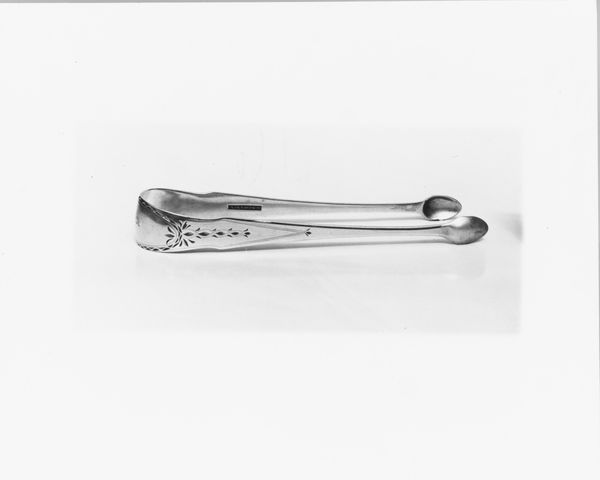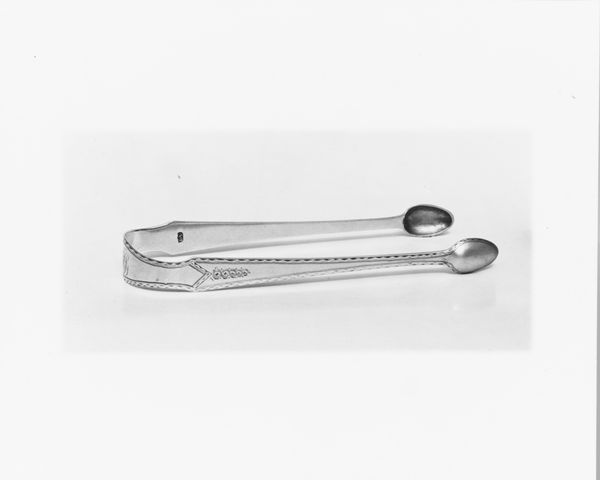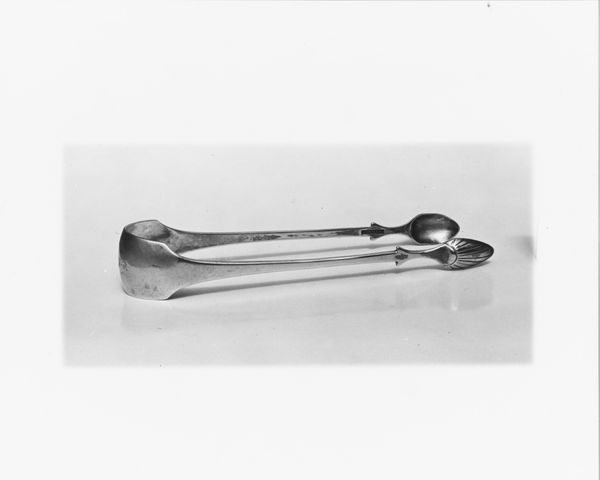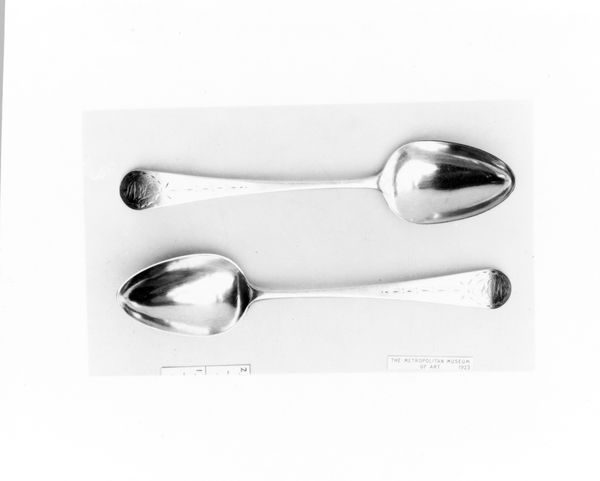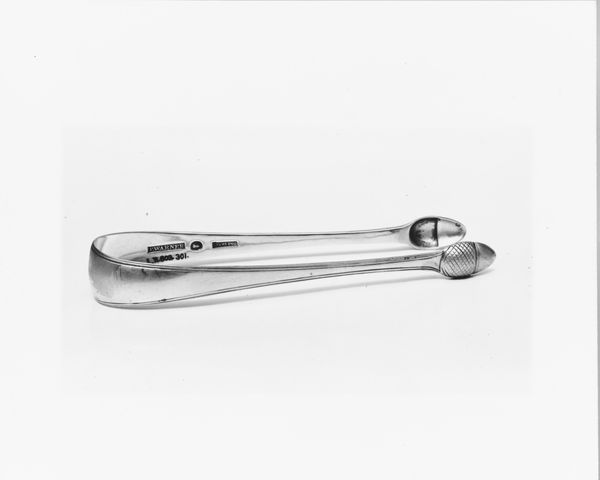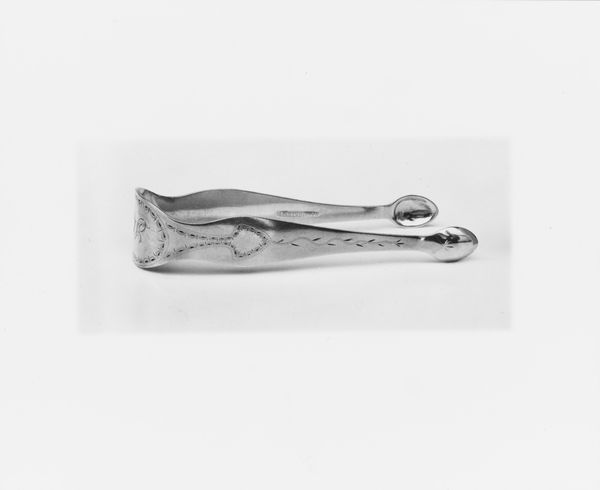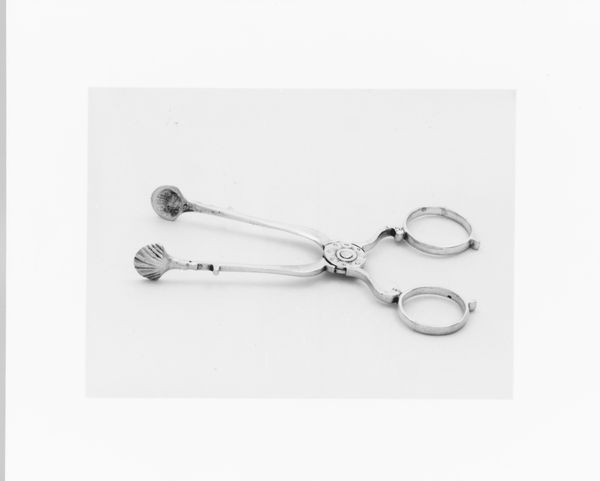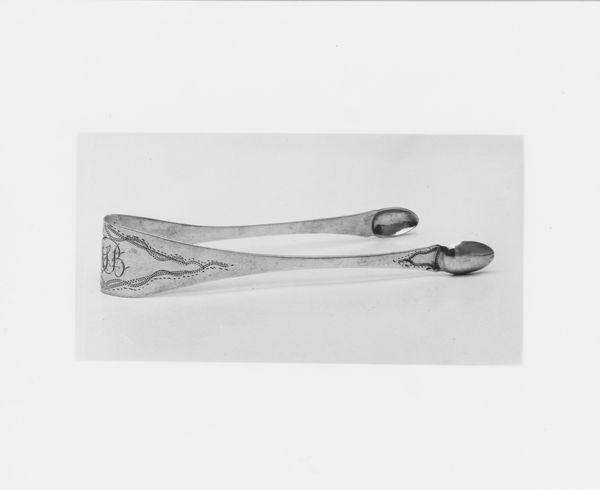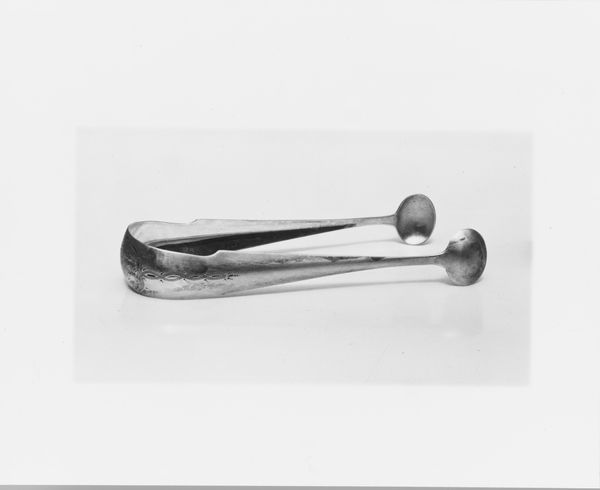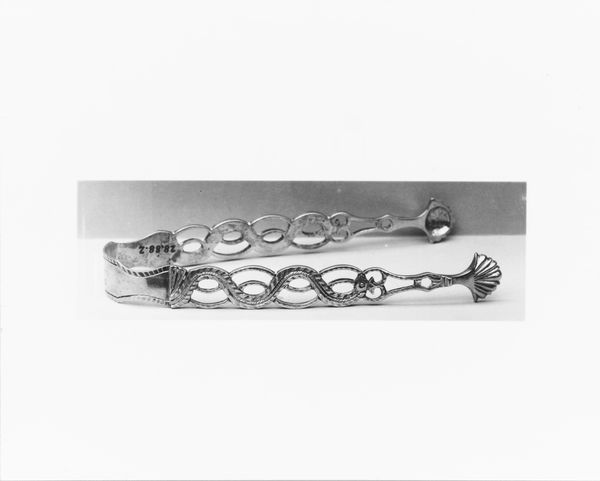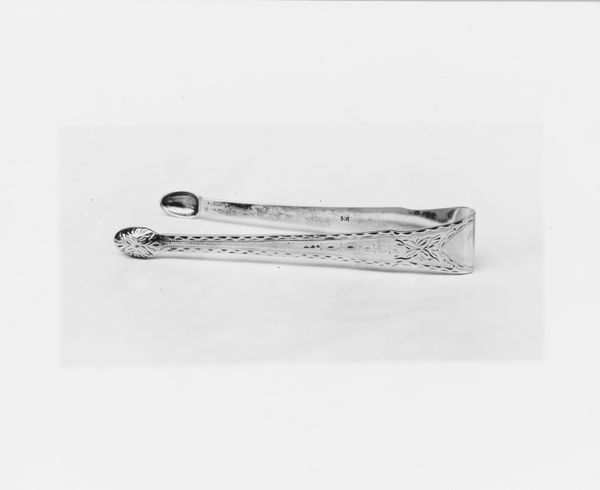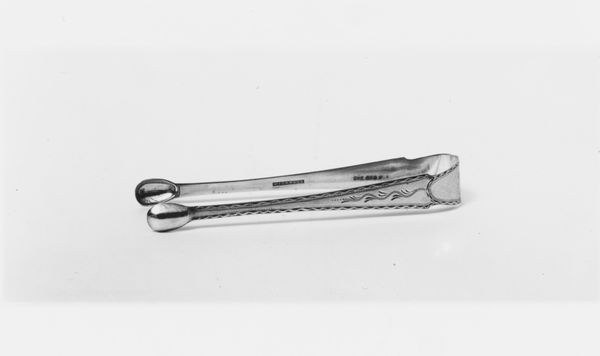
#
shape in negative space
#
negative space
#
purity
#
photograph of art
#
white dominant colour
#
natural element
#
strong focal point
#
white focal point
#
united-states
#
white background
#
a lot negative space
Dimensions: L. 6 3/4 in. (17.1 cm)
Copyright: Public Domain
Editor: Here we have Paul Revere’s silver "Tongs," dating from around 1807 to 1810. The photograph, set against a bright white background, almost makes the tongs float. What symbols or meanings do you see embedded in such a seemingly simple, functional object? Curator: These aren’t just tongs; they’re vessels brimming with the iconography of the young Republic. Notice the delicate shell motif at the tips. The shell, a classical symbol, whispers of elegance and trade, evoking distant shores and the exchange of goods, integral to American prosperity. But think, what *is* it meant to grab? Editor: Sugar, perhaps? Curator: Exactly! Sugar, and the uncomfortable history intertwined with it. A luxury item fueled by enslaved labor. Revere, a patriot silversmith, unwittingly crafts a tool that, in its very function, touches upon the nation’s complex moral contradictions. What does that tension tell you about cultural memory? Editor: It's like the object holds both aspiration and a shadow...the beautiful craft masking a dark reality? Curator: Precisely. Even the bright silver, connoting purity and wealth, becomes a loaded symbol. Revere, a craftsman of revolution, now fashions refined objects for a burgeoning elite, creating a cultural tension in plain sight. Does knowing this deeper symbolism alter your initial impression? Editor: Absolutely. I see it now not just as a utilitarian object, but as a potent reminder of early America's complicated identity. Thanks, that’s something to think about.
Comments
No comments
Be the first to comment and join the conversation on the ultimate creative platform.

